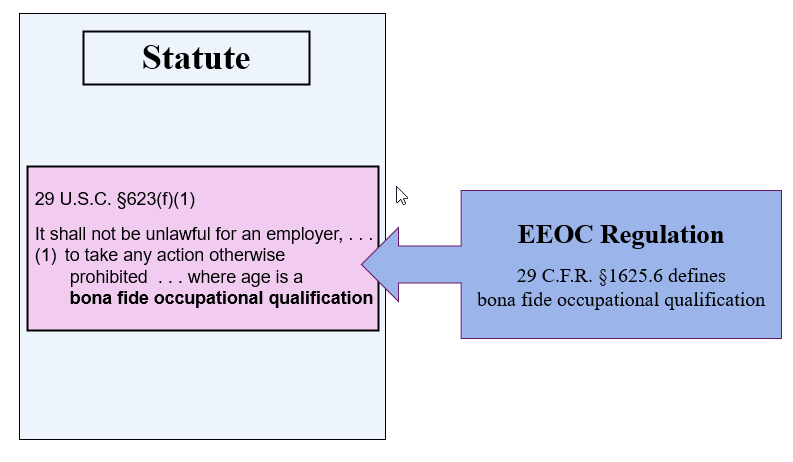What is a regulation?
Regulations, also called “rules,” are laws created by agencies that have more details on what some statutes mean and how those statutes will be enforced. This area of law is called “administrative law” because executive branch agencies “administer” certain areas of law under the authority of the legislature.
Some complex or technical areas of law require frequent changes, consistent guidance, and constant supervision. Although a legislature can pass a statute to create the basic law, a legislature cannot focus all its attention on one area of law. Instead, the legislature creates agencies, staffed with experts in that area of law. The legislature authorizes the agency to create regulations with the best definitions and specific details that the area of law requires. This means that we must read both the statute and the regulations to have a complete understanding of the law on these issues.
For example, Congress passed an act against age discrimination in employment decisions but did supply an exception if age is a “bona fide occupational qualification” of the position. 29 U.S.C. section 623(f)(1). Congress did not, however, define what this phrase means. Instead, Congress authorized the Equal Employment Opportunity Commission ("EEOC"), an agency within the Department of Labor, to define the term through regulations. 29 C.F.R. section 1625.6.

Only by reading the statute and the regulation together can we understand this phrase.
The legislature requires that agencies follow specific steps for the regulations to become valid law. You will find these steps included in a different act, known as the Administrative Procedures Act, or APA. For research, the most important steps require the agencies to publish both the proposed and the final regulations and give the public an opportunity to comment on those regulations. To find the current text of the regulations, arranged by agency and subject, check a publication known as an “administrative code.” To find the proposed regulations and any announcements from the agencies, arranged by date, check a publication known as an “administrative register.”
